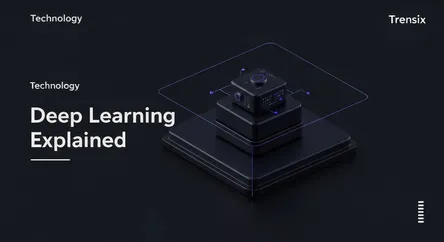Technology
Deep Learning Explained

Explore deep learning, a powerful AI method using multi-layered neural networks to learn from vast data, driving innovations from voice assistants to cars.
What is it?
Deep Learning is a specialized subfield of machine learning inspired by the structure and function of the human brain. It utilizes artificial neural networks with many layers—hence the term "deep." These deep neural networks can process vast amounts of data, automatically learning to identify patterns and features without being explicitly programmed. Unlike traditional machine learning, which often requires manual feature engineering, deep learning models can learn complex representations directly from raw data like images, text, and sound, making them incredibly powerful and versatile.
Why is it trending?
Three major factors are fueling the deep learning trend: the explosion of big data, significant advancements in computing power (especially from Graphics Processing Units or GPUs), and the development of more sophisticated algorithms and frameworks. This powerful combination has enabled breakthroughs that were once science fiction, leading to state-of-the-art performance in tasks like image recognition, natural language processing, and game playing. Companies across all sectors are investing heavily in deep learning to gain a competitive edge through smarter products and automated processes.
How does it affect people?
Deep learning is already integrated into daily life. It powers the recommendation engines on Netflix and Spotify, enables voice assistants like Siri and Alexa to understand commands, and facilitates real-time language translation. In healthcare, it helps doctors diagnose diseases by analyzing medical images with superhuman accuracy. It's also the core technology behind autonomous vehicles, which learn to navigate complex road environments. As it continues to evolve, deep learning will further personalize our digital experiences and automate increasingly complex tasks.